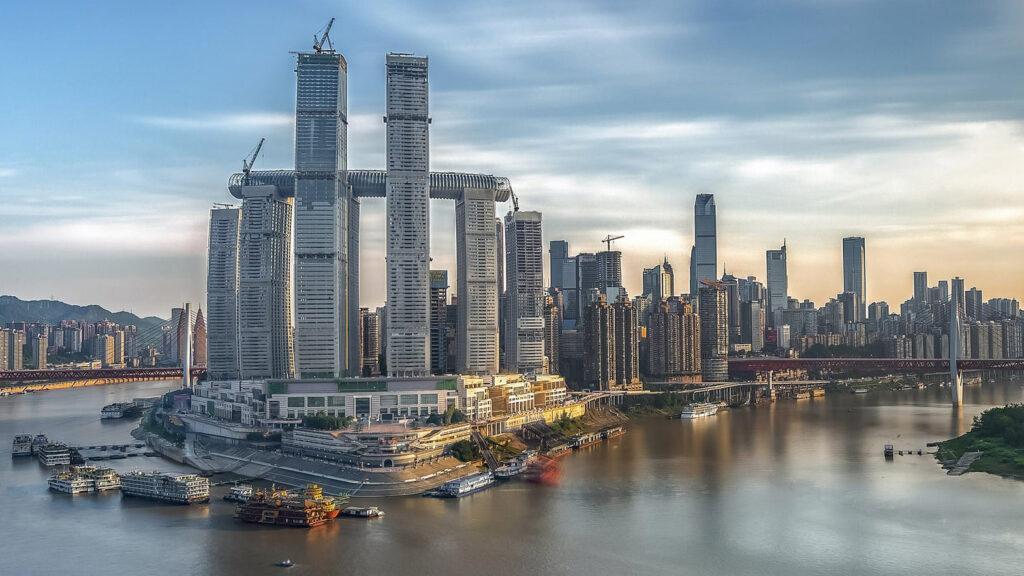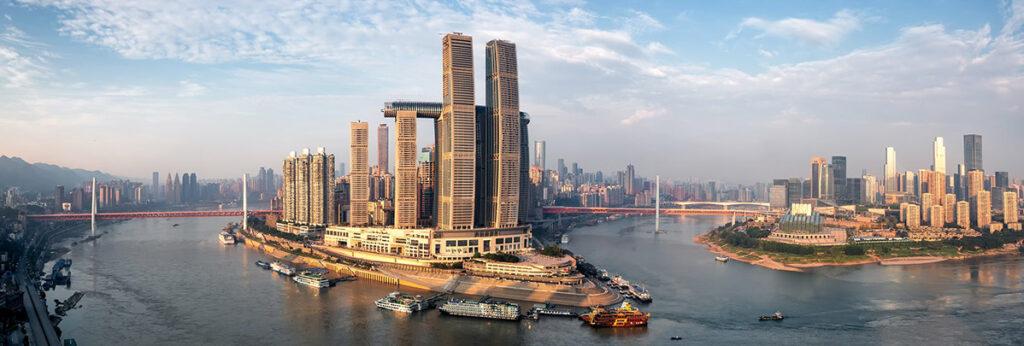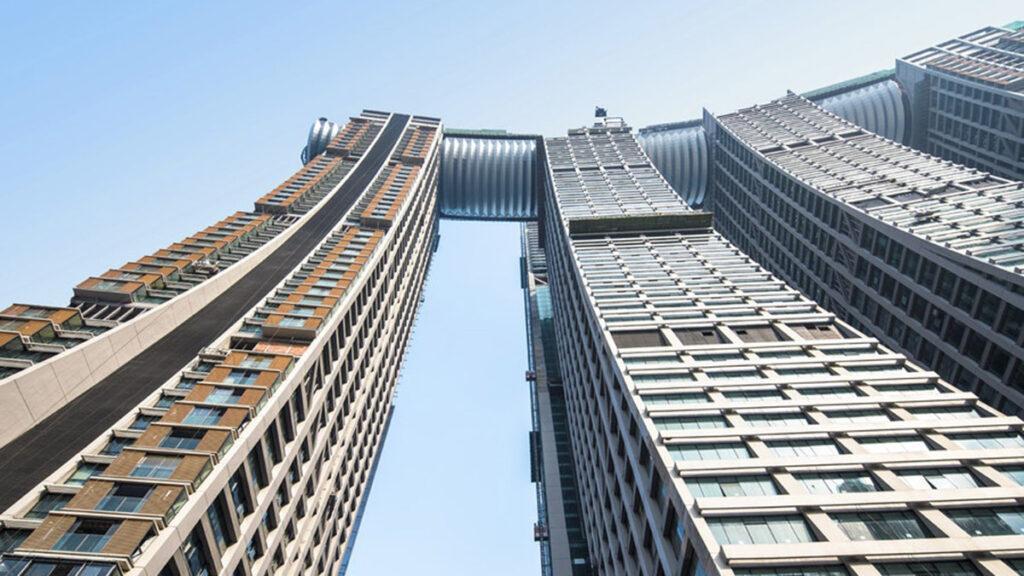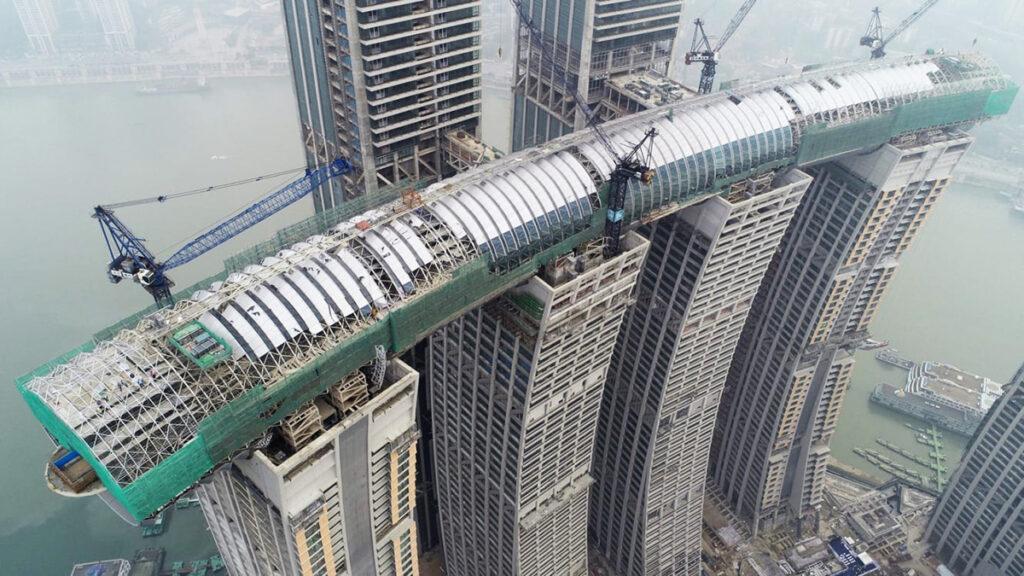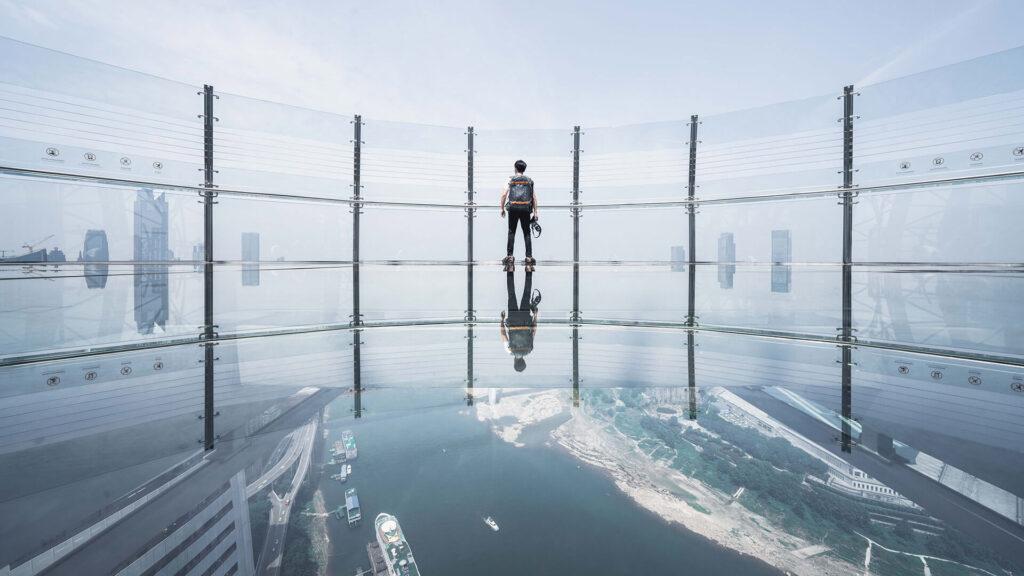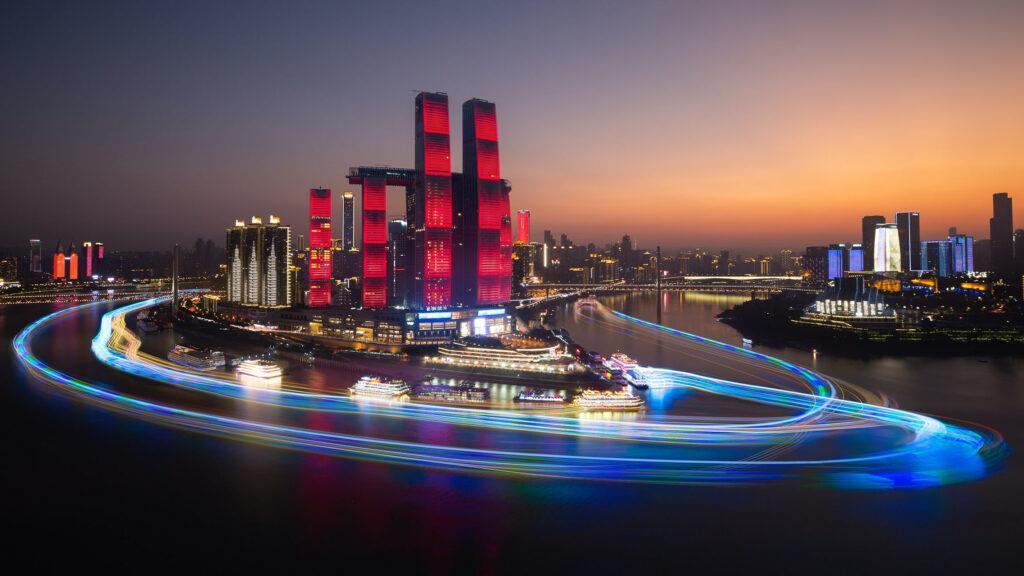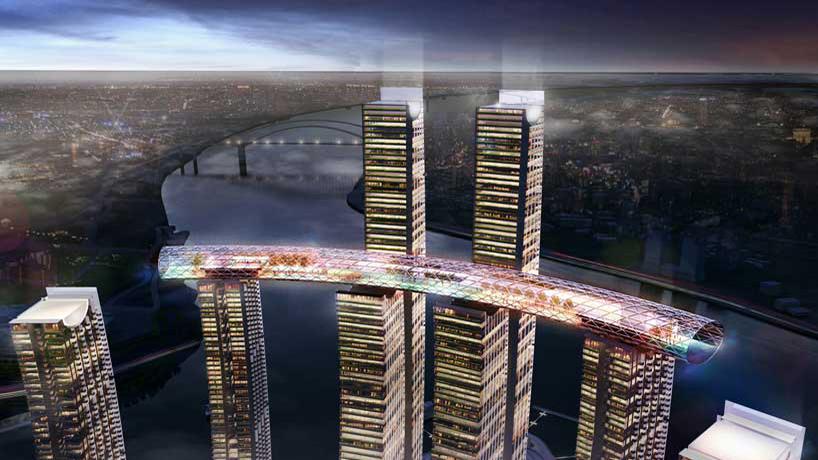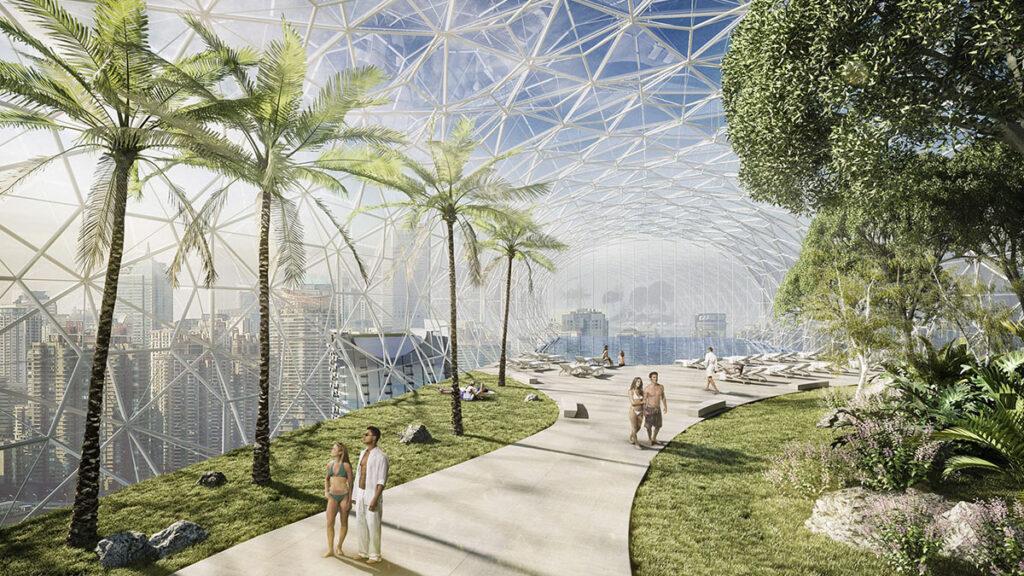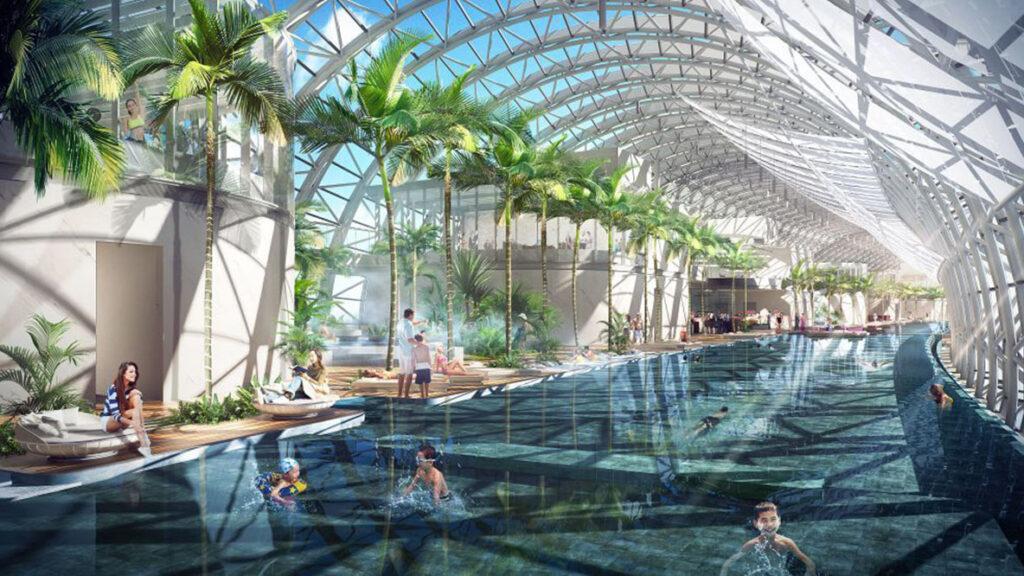Horizontal mastery
After eight years of construction, the world’s largest horizontal skyscraper has now opened. Even in China, which is no stranger to superlatives, the structure is described as spectacular.
Our perception of an object as large, or tall, is dependent on several factors. Such as how far away we are standing. Or whether we are able to compare its dimensions with more familiar objects. And it also depends on what we would call “normal”.
First horizontal skyscraper
One example: when a high-rise like the 220-metre DC Tower shoots out of the ground in Vienna, people in Austria are stunned by such a gigantic construction.
But the DC Tower would look decidedly puny next to structures such as the world’s first horizontal skyscraper, which has just opened to the public.
Huge prestigious project
Recently completed, the aforementioned structure is monumental even for China and the city of Chongqing, where it has been built. For good reason: Chongqing aims to use this prestigious project to finally emerge from the shadows cast by Tokyo – and gain international recognition for its present standing: as the largest city in the world.
The largest city?
Let’s take a closer look: while Tokyo – with more than 38 million people – leads the rankings as far as the number of inhabitants is concerned, Chongqing is out in front as regards surface area. From a more western perspective: the population of Tokyo is slightly larger than Canada’s. And the city of Chongqing alone is almost exactly the same size as the whole of Austria. Nevertheless, its profile fails to reflect these proportions, and this mega-development aims to change the power balance at last.
And so it is not surprising that our perspective makes it so difficult for us to grasp these dimensions. Let’s have a good try anyway.
Eight down, one across
A complex of eight skyscrapers – named “Raffles City” – has taken eight years to build. Six of these are linked with each other via a gigantic glass skybridge. This lies, so to speak, on four skyscrapers at a height of 250 metres. The skybridge bears the name “The Crystal”; it is roughly as long as the height of the Eiffel Tower (300 metres) – and is called the world’s first, and naturally largest, horizontal skyscraper.
Huge centrepiece
More than anything else, the bridge is the spectacular centrepiece of this urban development project that soars into the sky on a site of historical significance. But we’ll return to that later. Let’s first take a detailed look at this huge suspended construction.
Hoisting the three middle steel segments of The Crystal – each weighing up to 1,100 tons – to the designated height of 250 metres marked a world first.
The architects of “The Crystal”
Designed by Israeli architect and urban designer Moshe Safdie, the skybridge consists of a total of 3,000 glass panels and approx. 5,000 aluminium panels, with a total of nine individual segments.
Superb feat of engineering
To fit these together, the three important middle pieces were assembled while still on the ground, and then hoisted up using hydraulic strand jacks. Four further individual sections were assembled up at the top. The official statement by the architects: “Hoisting the three middle steel segments of The Crystal – each weighing up to 1,100 tons – to the designated height of 250 metres marked a world first.” It was a superb feat. Even for Chinese standards.
Nerves of steel
The observation deck opened to the public at the end of May, and since then visitors have been able to experience a very special kind of thrill. Almost the entire floor is made of glass, offering an extraordinary “bird’s eye view” of the city. More than anything else, observers are unavoidably drawn to the confluence of the Yangtze and Jialing rivers.
This was precisely what was intended by Moshe Safdie and his studio, Safdie Architects. After all, the towers and their horizontal skyscraper are located in a place of historical significance: the site where the two rivers merge was once where the Emperor’s decrees were received and distributed. It served as the gateway to the people.
Where eight towers set sail
Reflecting this history, the eight north-facing towers were constructed to form the shape of sails. Altogether, they create an impressive image that is supposed to be reminiscent of the ancient sailing ships that docked here at a trading post in the two adjoining rivers.
Place of entertainment
While shopping for goods in the vertical skyscrapers is the name of the game here as well – the towers contain shopping malls, expensive luxury residences, offices, serviced apartments and hotel accommodation, “The Crystal” is predominantly dedicated to enjoyment, entertainment and tourism. Pools, parks with nine-metre-high trees, restaurants, exhibitions and many other attractions are either already in place or will soon be completed.
In any case, the city’s residents are already showing a huge amount of interest in the project: over 900,000 people flocked to Raffles City on its opening weekend.
Some more numbers to finish:
- At 300 metres in length, “The Crystal” is longer than Singapore’s tallest building. The structure is also more than three times as high as the 93-metre Statue of Liberty in the US.
- The continuous steel structure weighs 12,000 tons, which is about the same as the entire Eiffel Tower in France.
- Almost 120 trees will grow in “The Crystal” to a final height of about 9 metres.
- It will have two swimming pools: the main pool measuring 50×8 metres and the adjoining 10×8-metre children’s pool.
Text: Johannes Stühlinger
Translation: Rosemary Bridger-Lippe
Images: Safdie Architects
